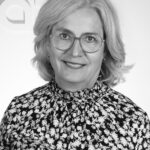Ecological impact on bioactive chemicals in brown seaweeds and their utilization
The aim of the project was to investigate the effects of environmental factors on the amount and bioactivity of polyphenols and polysaccharides in seaweed and kelp. The aim was to increase knowledge of the ecology and chemistry of these species for more efficient isolation of biological substances, their further analysis and utilization for bioactivity measurements. Samples of seaweed, marine core, pimples and claw seaweed were taken at three locations in the country; in the northern part of Reykjanes, in Breiðafjörður and Eskifjörður, a total of six times a year, from March to June, in August and October. A method was developed to isolate fucoidan and laminaran polysaccharides from bubble seaweed and claw seaweed. Total polyphenols were measured in all samples but bioactivity in selected samples. In addition, heavy metals and iodine were measured in selected samples. The amount of polyphenols was high in smallpox and seaweed, but low in marine nuclei and gillnets. Antioxidant activity, measured as ORAC and in the cellular system, was high in the samples containing high levels of polyphenols. Seaweed and seaweed showed anti-inflammatory activity. The results of the project significantly increase knowledge in the field of utilization of seaweed and kelp. They are useful in the development of seaweed processing for human consumption that is currently underway.
The aim of the project was to study the effect of environmental factors on polyphenols and polysaccharides in seaweed. Thereby be able to better recognize the ecology and chemistry of these species for more efficient isolation of the biochemical, their further analysis and utilization in bioactive measurements. Samples of Saccharina latissima, Alaria esculenta, Ascophyllum nodosum and Fucus vesiculosus were collected at three different locations, Reykjanes, Breiðafjörður and Eskifjörður, from March to October, in total six times. Method to isolate fucoidan and laminaran polysaccharides was developed. Total polyphenol content (TPC) was measured in all samples and bioactivity in selected samples. In addition, contaminants and iodine were analyzed in selected samples. The TPC was high in F. vesiculosus and A. nodosum but rather low in A. esculenta and S. latissima. The antioxidant acitivty, measured as ORAC value and in cells, was high in samples containing high amount of TPC. F. vesiculosus and A. esculenta had anti-inflammatory properties. The results of the project have increased the knowledge about the utilization of seaweed in Iceland substantially.
Report closed until 31.12.2017


